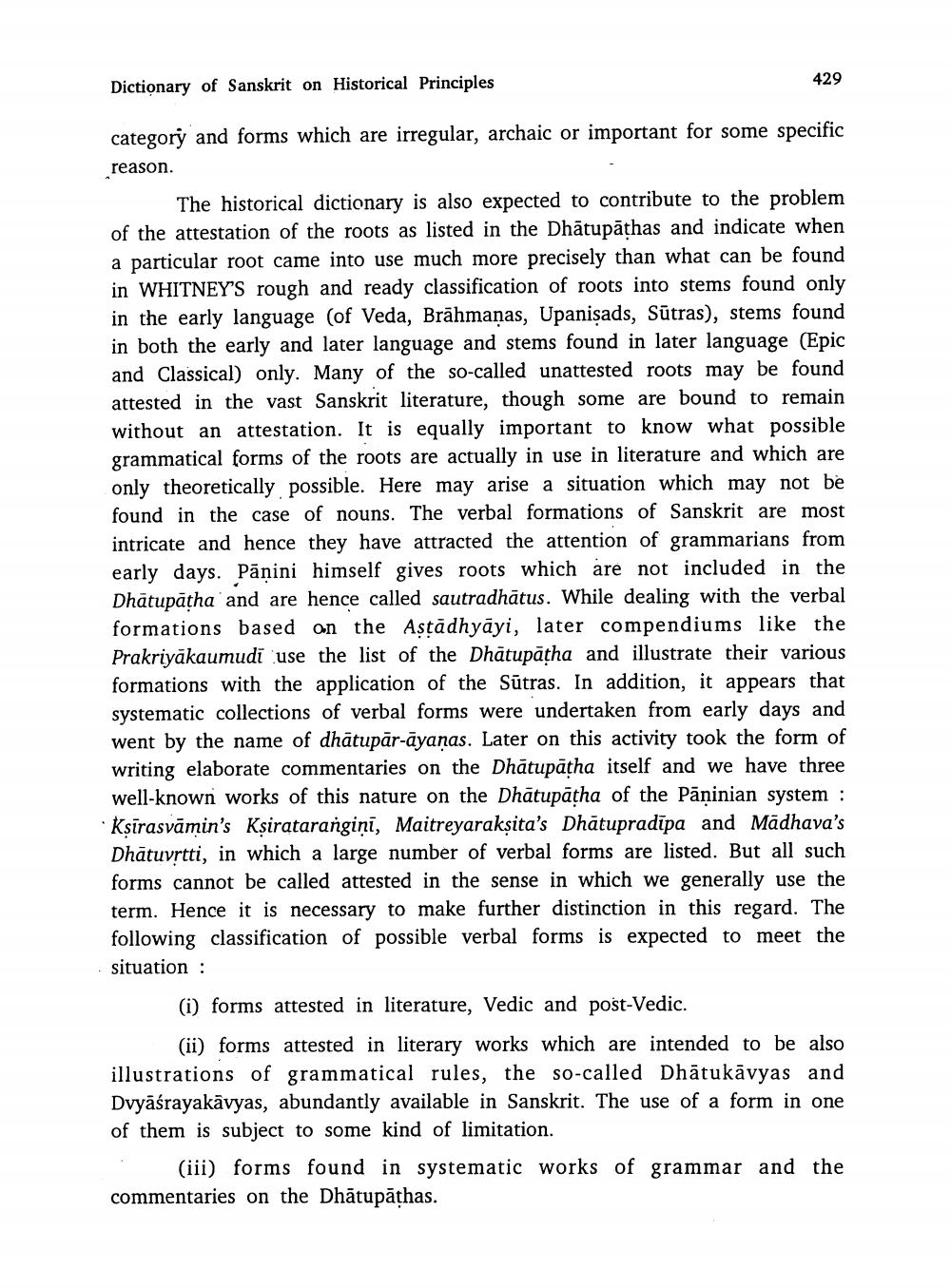________________
Dictionary of Sanskrit on Historical Principles
429
category and forms which are irregular, archaic or important for some specific reason.
The historical dictionary is also expected to contribute to the problem of the attestation of the roots as listed in the Dhātupāthas and indicate when a particular root came into use much more precisely than what can be found in WHITNEY'S rough and ready classification of roots into stems found only in the early language (of Veda, Brāhmaṇas, Upanisads, Sūtras), stems found in both the early and later language and stems found in later language (Epic and Classical) only. Many of the so-called unattested roots may be found attested in the vast Sanskrit literature, though some are bound to remain without an attestation. It is equally important to know what possible grammatical forms of the roots are actually in use in literature and which are only theoretically possible. Here may arise a situation which may not be found in the case of nouns. The verbal formations of Sanskrit are most intricate and hence they have attracted the attention of grammarians from early days. Pāṇini himself gives roots which are not included in the Dhātupātha and are hence called sautradhātus. While dealing with the verbal formations based on the Astādhyāyi, later compendiums like the Prakriyākaumudi use the list of the Dhātupātha and illustrate their various formations with the application of the Sūtras. In addition, it appears that systematic collections of verbal forms were undertaken from early days and went by the name of dhātupar-āyanas. Later on this activity took the form of writing elaborate commentaries on the Dhātupātha itself and we have three well-known works of this nature on the Dhātupātha of the Pāninian system : · Ksirasvāmin's Ksiratarangini, Maitreyarakṣita's Dhātupradīpa and Mädhava's Dhātuvrtti, in which a large number of verbal forms are listed. But all such forms cannot be called attested in the sense in which we generally use the term. Hence it is necessary to make further distinction in this regard. The following classification of possible verbal forms is expected to meet the situation :
(i) forms attested in literature, Vedic and post-Vedic.
(ii) forms attested in literary works which are intended to be also illustrations of grammatical rules, the so-called Dhātukāvyas and Dvyāśrayakāvyas, abundantly available in Sanskrit. The use of a form in one of them is subject to some kind of limitation.
(iii) forms found in systematic works of grammar and the commentaries on the Dhātupāthas.




